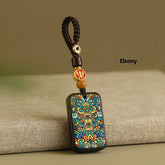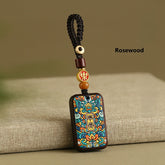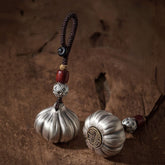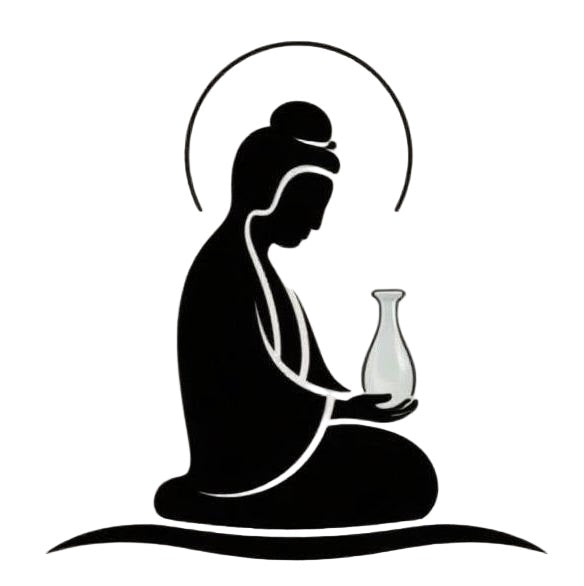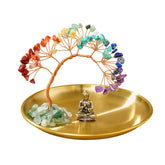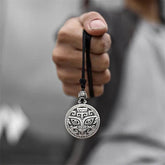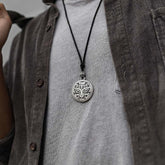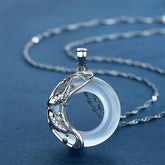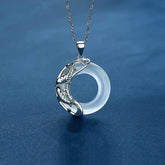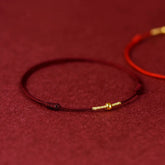Jade Necklaces
Jade necklaces have been capturing hearts for centuries with their timeless charm and deep symbolism. In this guide, we'll explore the world of jade, diving into its history, cultural significance, craftsmanship, symbolic meanings, and how to take care of it.
What is Jade?
Jade is a gemstone known for its toughness, durability, and shiny appearance. It comes in different types and colors, each with its own unique properties.
Definition of Jade
-
Tough and Beautiful: Jade is a gemstone made of either jadeite or nephrite minerals. It's been prized for thousands of years for its beauty and symbolic importance in many cultures.
-
FengshuiAndBuddha Tibetan White Jade Calm Necklace
Characteristics of Jade
-
Hardness: Jade ranks between 6 and 7 on the Mohs scale, making it pretty resistant to scratches.
-
Texture: When polished, jade feels smooth and waxy, which makes it look even more beautiful.
-
Translucency: Some types of jade, especially jadeite, can let light pass through, giving it a glowing look.
-
Colors: Jade comes in many colors, including green, white, lavender, yellow, and black. Green is the most common and valuable color.
Types of Jade
-
Jadeite: This is the rarer and more valuable type. It has vibrant colors and is more transparent. It can be found in shades of green, lavender, red, and yellow.
-
Nephrite: This type is more common and tougher. It usually comes in shades of green, white, and black.
Colors of Jade
-
Green Jade: This is the most traditional color. It symbolizes purity, harmony, and growth. It's also linked to prosperity and good fortune.
-
White Jade: This color symbolizes purity and innocence. It's often used in jewelry with detailed designs.
-
Lavender Jade: This rare color represents tranquility, spiritual insight, and intuition. It's linked to wisdom and inner peace.
-
Yellow Jade: This color reflects warmth, happiness, and abundance. It's believed to attract prosperity and positive energy.
-
Black Jade: This color is known for its grounding properties and protective energy. It symbolizes strength and resilience.
The History and Cultural Significance of Jade Necklaces
Ancient Civilizations' Reverence for Jade
-
Thousands of Years of History: Jade has been cherished by ancient civilizations like the Chinese, Mayans, and Maoris for its beauty and symbolic importance.
-
Sacred Stone: In many cultures, jade was considered a sacred stone that symbolized purity, wisdom, and prosperity.
Cultural Significance of Jade Necklaces
-
Chinese Culture: In China, jade is known as "yu" and holds a central place in the culture. Jade necklaces were worn by emperors and nobles as symbols of wealth and power. They were also believed to bring good luck and protection.
-
Mayan Culture: The Mayans called jade the "stone of the gods" and associated it with life, fertility, and rebirth. Mayan rulers wore jade necklaces to show their connection to the divine.
-
Maori Culture: In New Zealand, jade is called "pounamu" or "greenstone." Maori people wear jade necklaces called "hei tiki" as symbols of strength and protection. These necklaces are often passed down through generations.
Types and Varieties of Jade Used in Necklaces
Jadeite and Nephrite
-
Jadeite: This type is known for its vibrant colors and higher value. It's often used in high-end jewelry.
-
Nephrite: This type is more common and tougher. It's often used in traditional and cultural jewelry.
Varieties of Jade Colors
-
Green Jade: This is the most popular color and symbolizes harmony and purity.
-
White Jade: This color represents innocence and is often used in detailed designs.
-
Lavender Jade: This rare color symbolizes tranquility and spiritual insight.
-
Yellow Jade: This color brings warmth and happiness and is believed to attract prosperity.
-
Black Jade: This color is grounding and protective and symbolizes strength.
Crafting and Designing Jade Necklaces
Crafting Process
-
From Stone to Necklace: Making a jade necklace starts with selecting high-quality jade stones. Skilled artisans then carve, shape, and polish the jade into beautiful designs.
-
Necklace Designs: Jade necklaces come in many designs, from simple beaded strands to intricate pendants and carvings with cultural symbols.
Symbolic Meanings and Spiritual Significance of Jade Necklaces
Harmony and Balance
-
Peace and Tranquility: Jade is known as a stone of harmony and balance. Wearing a jade necklace can bring peace and tranquility to your life.
-
Protective Properties: Jade is believed to protect the wearer from negative energies and bring good fortune.
Protection and Good Fortune
-
Shielding from Harm: Many people wear jade necklaces for their protective properties. It's believed to shield you from harm and bring positive energy into your life.
Caring for and Wearing a Jade Necklace Properly
Cleaning and Maintenance
-
Keep It Shiny: To keep your jade necklace looking its best, clean it regularly with a soft cloth and mild soap. Avoid exposing it to harsh chemicals or extreme temperatures.
Wearing Guidelines
-
Personal Preference: When wearing a jade necklace, consider what feels right for you. Some people wear it close to the skin for its healing properties, while others wear it as a fashion statement. Make sure it's securely fastened and comfortable.
Conclusion
Jade necklaces are more than just beautiful pieces of jewelry. They carry the legacy of ancient wisdom, cultural heritage, and spiritual connection. Whether you wear a jade necklace for its beauty, symbolic meanings, or believed healing properties, it's a timeless piece that continues to enchant and inspire. Explore the world of jade with FengshuiAndBuddha and find the perfect piece for you.



